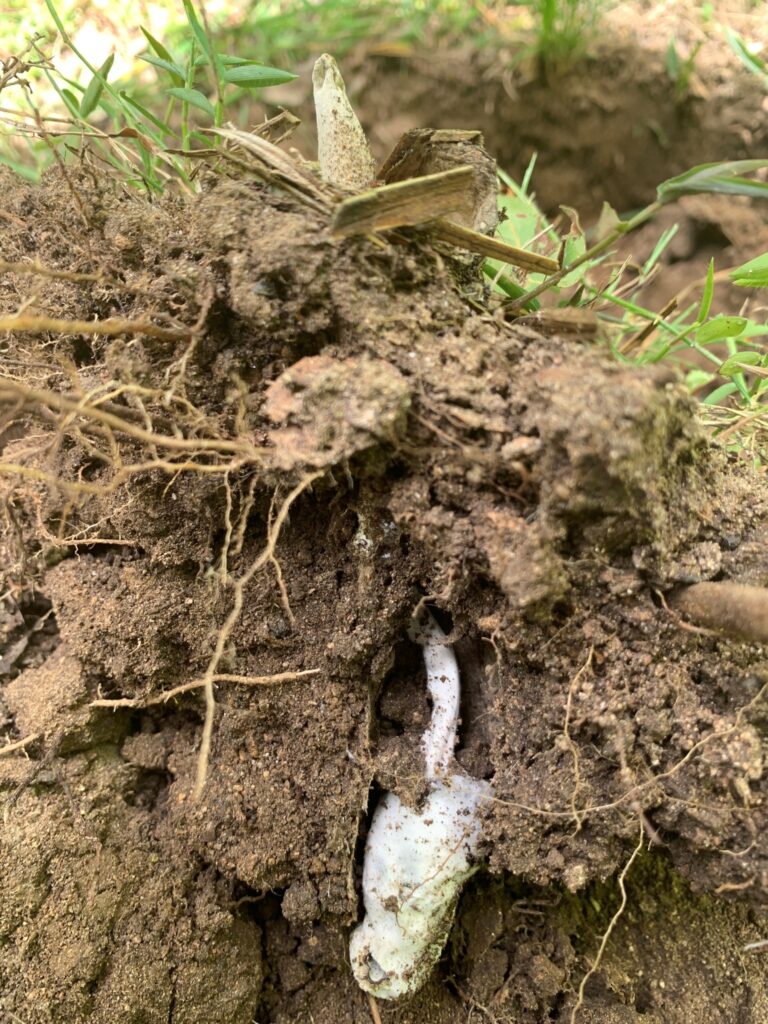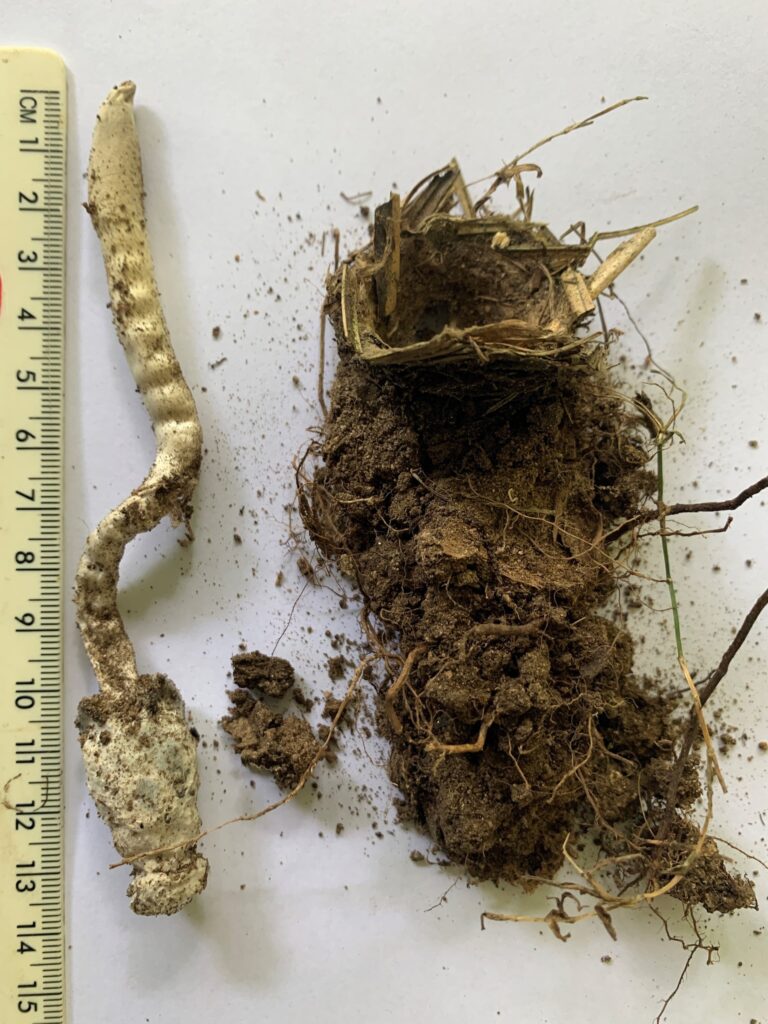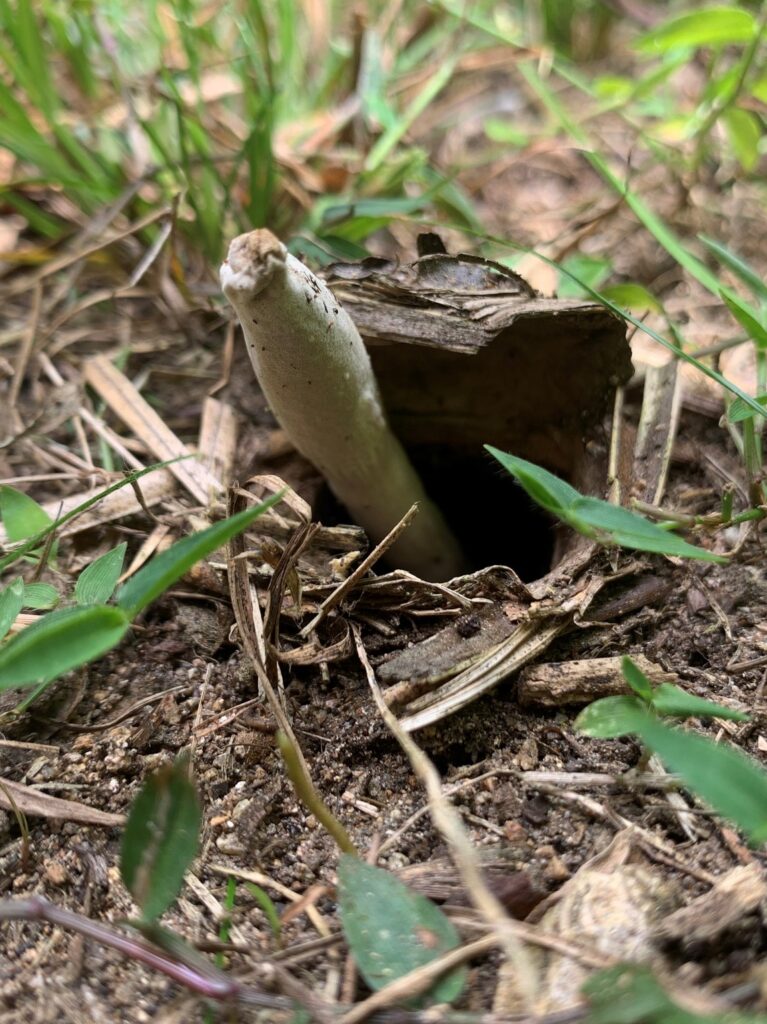Have you ever seen a seemingly mummified spider resting on the leaf of a small shrub or a blade of grass? It may have encountered a gruesome demise caused by a certain group of fungi called entomopathogenic fungi. Entomopathogenic fungi inhabit the soil and rely on invertebrate hosts to grow, spore and spread through the environment.
These fungi first attach to an external part of the invertebrate as a microscopic spore. Once attached to the host they begin to germinate growing hyphae (long branching filaments) and eventually colonise the outer body part. After entering the body cavity, they can parasitise the host and debilitate or kill the individual. There are many species of entomopathogenic fungi, some require species-specific hosts, whereas others are generalists.
In spiders, it is thought that the opisthosoma (abdomen or posterior part of the body) must be easier for fungal spores to penetrate than the much harder exoskeleton. This is likely why the opisthosoma typically becomes mummified first and then is later colonised by fungal mycelium (root-like structures) and fruiting bodies.
The four huntsman spiders (Heteropoda sp.) in the header photograph have all been frozen in time – killed by the entomopathogenic fungi. In time, the fungal fruiting bodies would have emerged from the spiders’ abdomens and distributed their spores to land on other unsuspecting host spiders.
Although spider hosts are known to become infected at various life stages (from eggs to adults), adults seem to the most common subject. It is hypothesised that fungal spores are dispersed more widely via adult spiders. Entomopathogenic fungi are common throughout bushland areas and are known to regulate invertebrate populations. More research is needed to understand the interactions between these fungi, their host species and broader ecological impacts. So next time you see a mummified spider, spare a thought for the ill-fate of the host and the fascinating capacity for fungi to thrive and virtually grow legs to move through the environment, via their hosts.
During a recent walk on a Land for Wildlife property, my colleague Alan Wynn found some trapdoor spider burrows in an area that had previously been cleared of vegetation. This was an exciting discovery as female trapdoor spiders can live up to 20 years and rarely venture out of, or far from, their burrow. They require relatively stable, undisturbed soil to survive so they can be an indicator of a healthy ecosystem.
Out of one trapdoor entrance was an emerging fungal fruiting body. Alan excavated the spider from its burrow to learn more about its fate and discovered the poor spider encased in fungal hyphae from the fruiting body of a Cordyceps species, a type of entomopathogenic fungi. Photos below by Alan Wynn.
Article by De-Anne Attard
Land for Wildlife Officer
Sunshine Coast Council
References and Further Reading
Evans, HC (1982) Entomogenous fungi in tropical forest ecosystems: an appraisal. Ecological Entomology 7: 47-60.
Wolfgang N (Ed.) (2013) Spider Ecophysiology. Springer-Verlag Berlin.



